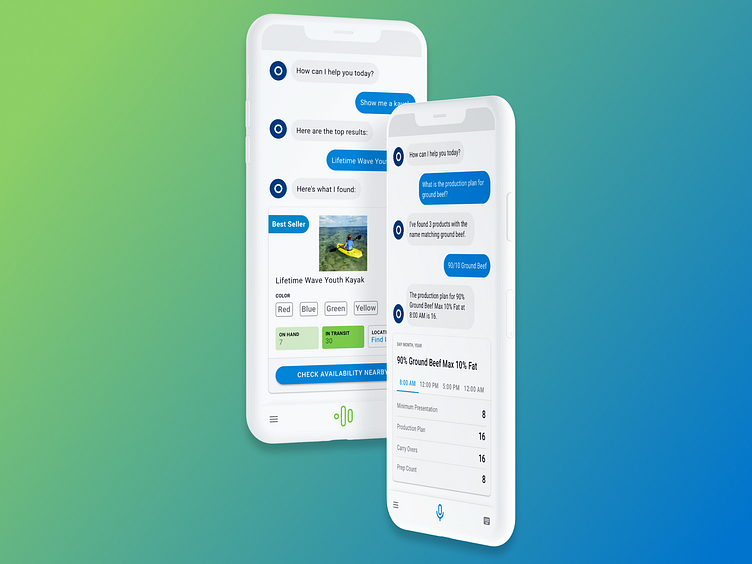Retail AI Assistant
A large retailer needed a way to integrate knowledge base access into the daily activities of employees. In their retail environment, teams were all over the floor — each with long to-do lists and frequent interruptions. This was compounded by the fact that help might be 50 yards away in expansive store layouts.
I lead the design of the AI-powered virtual assistant that has led to improved store productivity and more impactful interactions with customers — all powered by valuable information and data right in employees’ hands.
Project Size
2 Designers, 1 Researcher, and a large Engineering Team
Role and Responsibility
I lead a team of 3. Once our research was conducted I created the initial design direction within Retailer's Brand Guide, the interaction rules, and information architecture that were then further developed in more detail by my other two designers.
The Problem
Working with a large, cross-functional team with multiple stakeholders and priorities, we identified what tasks and information were causing the most friction for managers and employees. Then, we pulled together data from disparate systems into a single source of truth that would inform the features of the tool.
We uncovered the most common questions employees asked:
Is this product in stock?
If so, where can the customer find it?
How much does it cost?
If it’s not in stock, what’s an appropriate substitute?
If a substitute isn’t available in this store, where is the next closest store?
Previously, employees were using the store’s public-facing consumer mobile app to answer questions, sometimes leaving the employee unable to address the customer’s needs and as a result, leaving the customer with a less-than-desirable in-store experience.
The Solution
After talking with frontline workers at various levels at multiple store locations to understand user pain points, we created a chatbot — an AI-powered virtual assistant that sits on top of a vast employee knowledge base.
We began with two pilots: the first executed across five club stores, then a regional pilot to ensure we were addressing the most impactful needs of employees before rolling the tool out across all stores.
To make adoption easy for frontline employees, we incorporated a feedback mechanism into the chatbot where additional user responses and requests could be backlogged, identified, and categorized, building empathy with employees and letting them guide new feature prioritization.
The Results
Prior to changes rolled out on our retail client’s sales floor, frontline workers were often reluctant to reach out or ask for help on things that went beyond the initial training they received. Now, all employees have to do is pick up their device and verbally ask a question — seconds later, the answer is provided. And they’ve asked a lot of questions: more than ten million to date.
By making this resource available to the frontline, employees were eager to become more knowledgeable of their roles without feeling exposed or nervous about not being completely proficient. Employees immediately began to provide more value to consumers because they no longer had to ask others for assistance, walk away to ask another employee for help, or venture to find a product only to find it was out of stock. Eventually, common, repetitive tasks like item lookup saw a time reduction of 40% with this technology. The stakeholder's were proud and we won a phase 2 scope of work for our efforts in kicking off this heavy endeavor.
"Over the past few months, employees have also used the tool for information related to COVID-19, including the latest guidelines and guidance along with helpful videos. In addition to guidance from their managers, having access to the answers and information they need at their fingertips gives employees confidence as well as more time on the floor with customers." - Retailer's Chief Product Officer








